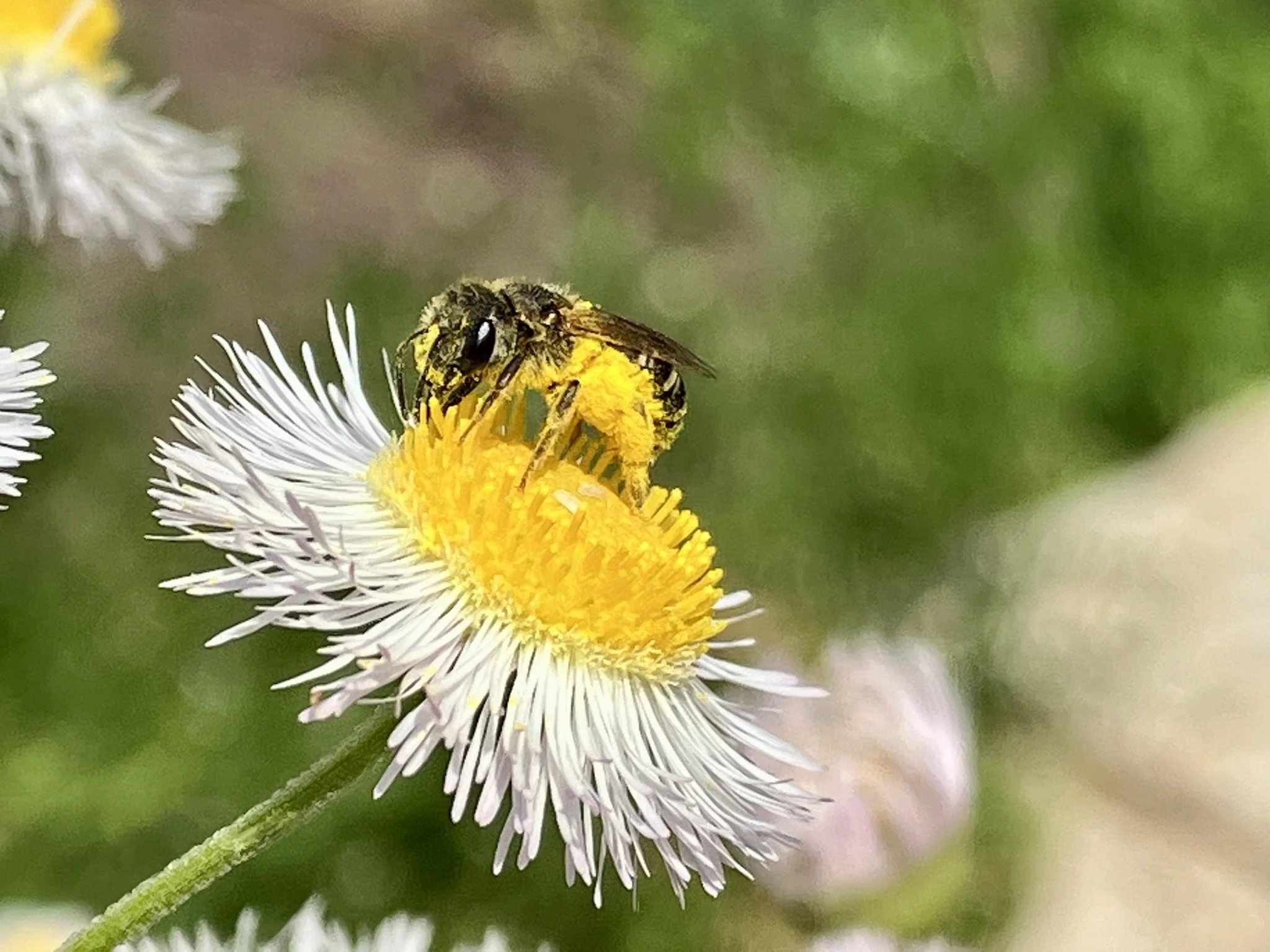Jump-starting native gardens with biennials, with a particular focus on the amazing fleabane
Biennials, plants that germinate and get established in their first year, but then overwinter and explode into high-speed growth in their second year, are a huge boon to gardeners, especially those establishing new native beds. One great example is fleabanes, the Erigerons, of which we have four species native to Philadelphia (or possibly five, depending on which taxonomist you follow). They all range from somewhere between annual to perennial, but even the annual species (E. annuus) will behave like a biennial if it germinates late enough in the season. Their seeds germinate over the spring and summer, yielding what’s known as a “basal rosette,” which will overwinter until the following season.
For us gardeners, that means an abundance of fleabane rosettes popping up in garden beds, but also in untended spaces like sidewalk cracks and tree pits, which can easily be dug and transplanted in the fall. The most difficult part can be telling the species apart, so I photographed all four species throughout their lifecycle in 2024, with particular emphasis on the rosettes. Amazingly, I was driven to do this in part because I was unable to find a single image of an E. srtigosus rosette on the entire internet!
As you can see below, the rosettes differ substantially, with E. strigosus having a slightly spatulate leaf, while E. philadelphicus has a less pronounced spatulate form, and a prominent white mid-rib. The leaves of E. annuus are more rounded and often multi-lobed. E. pulchellus, the only true perennial among these, is unlikely to be encountered locally in the wild, but its leaves are unique in closely hugging the soil surface.
Basal rosettes of locally native fleabane species
The flowers are similar among the four species, except for E. pulchellus, which produces substantially fewer, but larger, pink-hued flowers. Among the other species, flower color can vary from white to pink, but the flowers usually fade to white. The species also bloom in succession, with E. pulchellus and E. philadelphicus leading the way in May, followed by the substantially taller E. strigosus, which can easily dominate a meadow planting during its long blooming period. E. annuus may bloom at any point during the season, depending on when its seed germinated. All of these species are visited by an enormous array of pollinators, including especially some of our smaller native solitary bees, as well as flies, wasps, and beetles.
Fleabanes are often thought of as a “weed” to be removed from a garden, but a large stand of these little daisies can be breathtaking, and an incredible resource for wildlife. And through self-seeding and, in some cases, reproduction via rhizomes or stolons, they can be a true set-it and forget-it plant.
A bee of genus Halictus collecting pollen from E. philadelphicus

